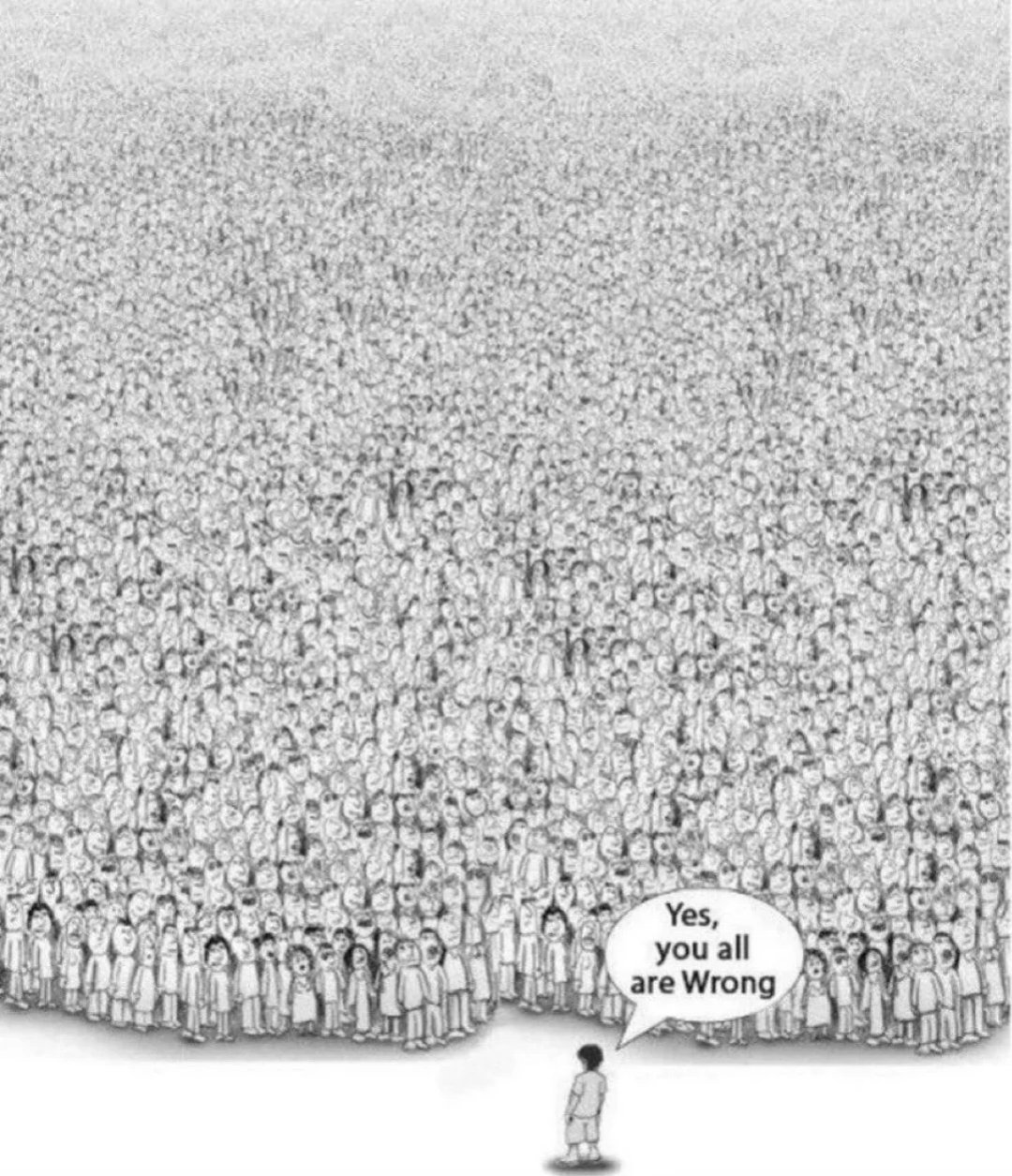this post was submitted on 07 Dec 2023
506 points (87.3% liked)
Asklemmy
43394 readers
1456 users here now
A loosely moderated place to ask open-ended questions
If your post meets the following criteria, it's welcome here!
- Open-ended question
- Not offensive: at this point, we do not have the bandwidth to moderate overtly political discussions. Assume best intent and be excellent to each other.
- Not regarding using or support for Lemmy: context, see the list of support communities and tools for finding communities below
- Not ad nauseam inducing: please make sure it is a question that would be new to most members
- An actual topic of discussion
Looking for support?
Looking for a community?
- Lemmyverse: community search
- sub.rehab: maps old subreddits to fediverse options, marks official as such
- !lemmy411@lemmy.ca: a community for finding communities
~Icon~ ~by~ ~@Double_A@discuss.tchncs.de~
founded 5 years ago
MODERATORS
you are viewing a single comment's thread
view the rest of the comments
view the rest of the comments

Depends on whether you're a computer or a mathematician.
2(2+2) is equivalent to 2 x (2+2), but they are not equal. Using parenthesis implicitly groups the 2(2+2) as part of the paretheses function. A computer will convert 2(4) to 2 x 4 and evaluate the expression left to right, but this is not what it written. We learned in elementary school in the 90s that if you had a fancy calculator with parentheses, you could fool it because it didn't know about implicit association. Your calculator doesn't know the difference between 2 x (2+2) and 2(2+2), but mathematicians do.
Of course, modern mathematicians work primarily in computers, where the legacy calculator functions have become standard and distinctions like this have become trivial.
It seems you are partly correct. You are correct in saying that this is how it used to be done (but that was 100 years ago, it seems) and you are correct that in modern times, this would be interpreted as I did it, above.
Link: https://mindyourdecisions.com/blog/2019/07/31/what-is-8-%C3%B7-22-2-the-correct-answer-explained/
I'm old but I'm not that old.
The author of that article makes the mistake of youth, that because things are different now that the change was sudden and universal. They can find evidence that things were different 100 years ago, but 50 years ago there were zero computers in classrooms, and 30 years ago a graphing calculator was considered advanced technology for an elementary age student. We were taught the old math because that is what our teachers were taught.
Early calculators couldn't (or didn't) parse edge cases, so they would get this equation wrong. Somewhere along the way, it was decided that it would be easier to change how the equation was interpreted rather than reprogram every calculator on earth, which is a rational decision I think. But that doesn't make the old way wrong, anymore than it makes cursive writing the wrong way to shape letters.
No, it wasn't. The claim that the rules were changed is a debunked myth.
No, that video is wrong. Not only that, if you check the letter he referenced Lennes' Letter, you'll find it doesn't support his assertion that the rules changed at all! And that's because they didn't change. Moral of the story Always check the references.
Only if that's what the programmer has programmed it to do, which is unfortunately most programmers. The correct conversion is 2(4)=(2x4).
Actually it's only in the 90's that some calculators started getting it wrong - prior to that they all gave correct answers.